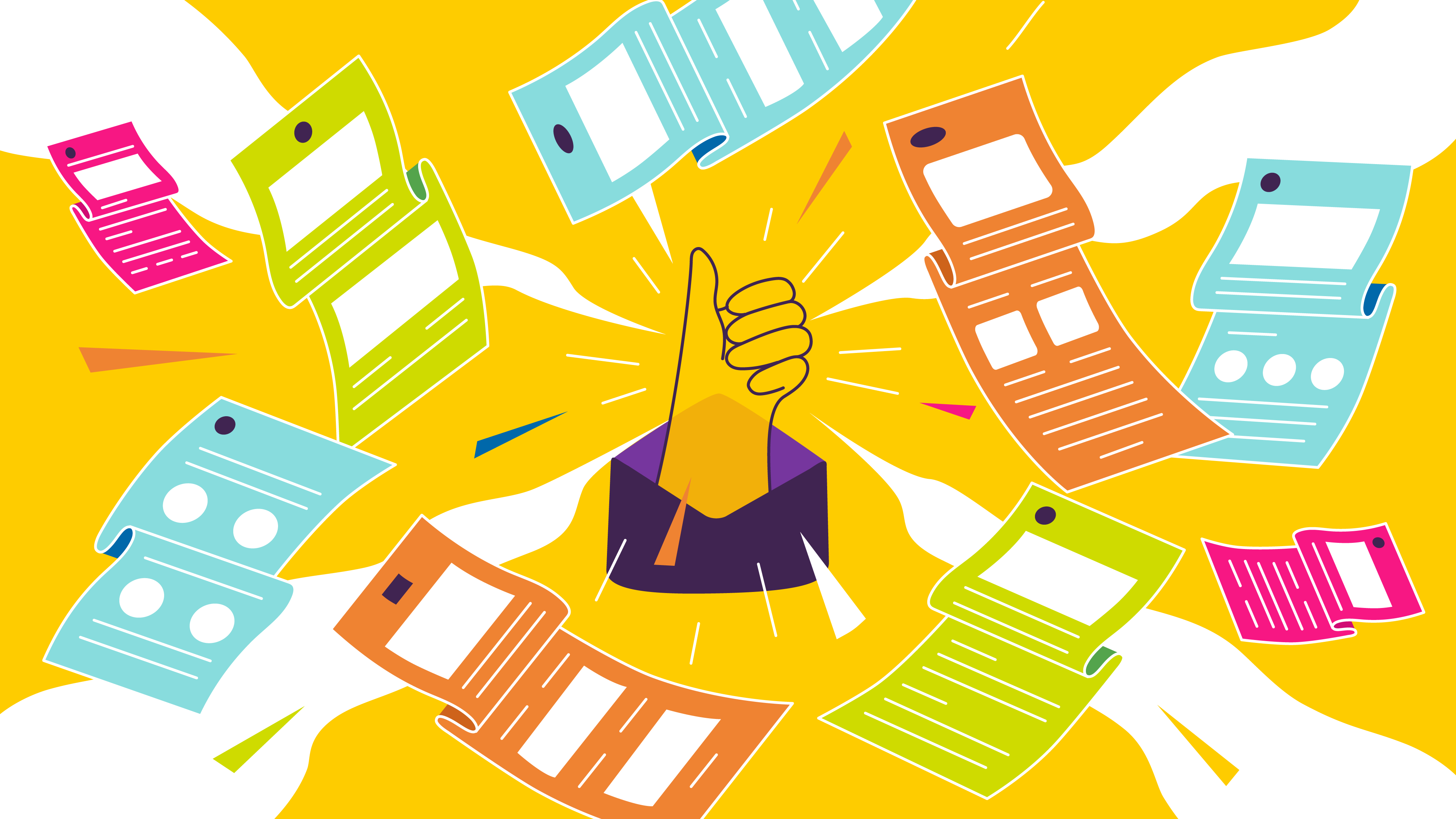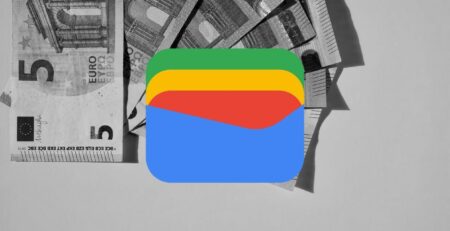In today’s corporate environment, communication is important. Whether it’s keeping customers and employees in the loop about what’s happening with your products, services, or upcoming events, good communication is key to a successful company. We’ve got tons of ways to connect with everyone, from old-school print to the vast world of the Internet and social media.
This article zooms in on one great way to keep everyone in the know – newsletters. Let’s explore why these little updates are a big deal for making connections and helping your company grow.
Table of Contents
What’s a Newsletter?
A newsletter shares news and updates that are targeted for a specific group. It can be your customers or employees as well. Sometimes it’s a mix of short stories, pictures, and graphics that are mainly there to keep things interesting.
Newsletters have a set schedule. They are either released once a week, every month, or whenever it makes sense. They can be in printed form or mail, but in 2025, they are mostly emailed
Why Use Newsletters?
Newsletters have a lot of benefits, but some of them are:
- They help keep everyone updated on new product releases, services, or any upcoming events.
- They come with helpful tips that can remind people about important things or teach them something new.
- Newsletters also keep things fun. Companies can include something light-hearted to make readers smile.
So, in simple words, newsletters keep everyone in the loop while simultaneously helping your business grow.
Main Components
Going back to the basics is essential, whether you’re creating something new or giving a makeover to an existing publication. It’s a smart move to rethink the core elements because they tend to evolve over time.
Understand Your Audience
Understand your audience and their needs. Is the newsletter just for you or for the entire team? Will you be sharing it with customers and suppliers? Keep the age group in mind. Are they older, younger, middle-aged, or a mix of generations? These questions will define your audience so that you get to adjust your content and style accordingly.
A Mission Statement
There should always be a mission statement for your company’s newsletter. It defines the purpose of your newsletter. It doesn’t have to be anything long. Keep it concise, not more than one or two sentences. This quote will serve as your guide and make sure your content doesn’t go off track. It helps keep the content interesting to the audience and avoids any irrelevant areas.
The building blocks of an engaging newsletter. Source: Publicate
Content
Consider the content of your newsletter by first understanding its purpose and audience. If the audience is specific, tailor the articles to match their interests. For instance, a sales team’s newsletter might focus on quick-read articles about selling tips, sales goals, and upcoming meetings. A broader audience, like your entire staff, may prefer articles covering staff changes, benefits, corporate programs, and other developments.
For customers, topics like new products, services, incentives, and discounts might be more relevant. When selecting subjects for articles, ensure they align with the newsletter’s purpose. Stay focused; for example, if the goal is to inform customers about new products, avoid including details about internal meetings. Keep it purposeful and engaging.
Budget
Set your budget for your newsletter. Keep several things in mind, like if you want the work to be handled by in-house staff or external vendors. The distribution method you choose, be it print or electronic, may also impact the budget.
Style
Give special attention to the overall visual appeal of your newsletter. Is it grabbing your attention right when you open it? Because what happens is even the most well-written content can be a failure if the layout is all over the place. It shouldn’t be cluttered or visually dull. The layout should be tidy, with a pop of color, and all the graphics should be properly placed between the text.
Type style and size should be the ones that are easy to read. For headings, sans-serif typefaces like Arial or Calibri are recommended. For body text, choose serif-style typefaces like Garamond or Times Roman. They are usually known for better readability. Adjust the font size and spacing based on your audience’s age. Generally, older audiences prefer larger fonts or increased spacing.
Make your newsletter stand out with smart design. Source: Publicate
Typefaces and Colors
The newsletter body text should be in one main typeface, and then a different one for headings and subheadings. Typefaces usually come in different styles, like bold or italics, and they help you stay consistent and also add variety. Try not to use too many typefaces at once because they can make your newsletter look cluttered, and it’s also hard to read. The choices should fit the purpose of the newsletter. Like, if it’s about business news, you shouldn’t use any casual fonts like Comic Sans.
Adding a pop of color to your newsletter is always a good idea. It can be just one color along with black. What it does is, it helps make your publication more lively and also grabs the attention of your potential readers.
Graphics
Add photos, graphs, and charts, as they make your newsletter visually appealing and easier to read as well. Graphs break up the content of long blocks of text and make it more engaging. So, the visuals should always fit the story. Like, a company report, let’s say, might look better with a chart showing important figures, and just like that, a project update might look better with the project photos. Readers can find information in a lot of other places, so your newsletter should stand out to them. It should be unique, look- and style-wise, so that people want to read every single release.
Nameplate
The nameplate is at the top of your newsletter’s front page. It should always include the company name or logo, because it’s usually the first thing readers see. And it also sets the tone. Pick a name that’s catchy and also easy to remember. The readers will instantly connect with your newsletter that way.
Match the typeface with your headings and subheadings, and use color or reversed text to make it more appealing. White on a dark background works well. Date and volume number should be neatly placed at the bottom of your name. It gives it a clean and professional look.
Masthead
The masthead serves as a directory. It lists your company’s owners, departments, officers, and contact information (address, phone, fax, email, and website). It typically includes details about the newsletter’s editor, their contact information, and the mission statement.
Consider the following important aspects of the newsletter’s format or structure:
- Most printed newsletters adhere to a standard size of 8 1/2 inches x 11 inches. Electronic newsletters follow a size designed to work well on various devices
- The number of pages depends on your audience and the type of news you plan to share. Starting with four to eight pages is a good idea, and you can add more later if needed. For printed booklets, pages must be added in multiples of four
Format/Structure
Consider the following elements when structuring your newsletter:
- Go for one, two, or three columns to avoid crowding the page
- Determine the width of page margins and the space between columns. For instance, choose one-inch page margins and a half-inch column margin
- Decide whether columns are justified (even on the right) or ragged. While justified columns may look neater, they can make text harder to read
- Choose whether paragraphs start flush left or with an indent. Consistency is key
- Include symbols at the end of articles, headers and subheads, page numbers (folios), ruled lines, charts, and photographs
- After deciding on these elements, create a style sheet documenting your choices. This serves as a guide for you and your team, ensuring consistency. Consider creating a template to streamline the process for future editions of the newsletter
Press
Before publishing, be it in print form or electronically, keep in mind the following steps:
No matter how many times you review the text, you might miss something. It is better to have someone there to review with fresh eyes for grammar, typographical, and spelling errors. Your newsletter is supposed to reflect your company and the quality of work and services you provide. And for this very reason, make sure it looks good and reads well.
Once you are done with everything, decide if you want to print and mail it or just distribute it electronically based on the choices depending on the budget.
Polish and perfect before hitting send! Source: Vecteezy
If your company cares about sustainability, consider using recycled paper. There are many types in the market, and their prices may vary. With some options, you may have to follow extra rules, steps, or costs, especially if there are certifications and labels involved. If you have a local printer, it can help you find what’s available in your area. If you pick recycled paper without any special labeling, then you can include the recycled logo and add a short note as well. On the note, mention something like the newsletter was printed on recycled paper. For electronic distribution, there are two options available:
Convert to PDF and Email
Start by designing your newsletter using standard office software or design-specific software. After that, convert it to Adobe Acrobat PDF for emailing. This allows you to view it on multiple devices, and it’s also easy to print.
Use an Email Marketing Service
Use online email services like Constant Contact for designing and sending the newsletter.
These services come with a variety of design templates that can also be customized to match the appearance of your newsletter. There is usually a “safe unsubscribe” feature that allows users to adjust their subscription preferences however they want.
Also, when you are using PDF, keep the email size restrictions in mind. Try to keep the file under 2 MB to accommodate readers’ company limitations.
Date & Email Address
There are many options out there, but it’s better to send your newsletter from an email address like [email protected]. If you use the newsletter or company name as the sender in place of an individual’s name, it may help your newsletter stand out from other regular business emails.
Make sure there is a consistent subject line, like “Your Newsletter’s Name for MM. DD. YYYY”. This helps readers who prefer sorting their emails into folders.
Have a vision for your business? Let us help you get started! At EvolveDash, we’re passionate about helping businesses grow and evolve in the digital world. Our team is here to help every step of the way, from developing custom mobile apps to creating personalized websites.
With a proven track record of helping over 100 satisfied customers and 450 completed projects, we’re confident we can help you achieve your goals too. Let’s turn your business vision into success!
FAQs
- How often should I send a company newsletter?
They are usually sent on a regular basis, like weekly or monthly. As for the timing, it depends on the content and the needs of the audience. Try to find a balance between staying in touch and not overwhelming your readers.
- What is the best format for a newsletter?
Newsletters can be printed or digital. The format is usually picked based on audience preferences. Digital formats are cheaper and also easier to distribute, but the printed ones may still appeal to some groups.
- How can I make my newsletter more engaging?
The layout should be very clean, and the content should be relevant. Use appealing visuals like images or charts. Match the tone and topic to your audience’s interest, as it makes the newsletter more engaging.
- Can I include promotions in my newsletter?
Yes, definitely, especially if your audience is your customers. Promotions, discounts, or any updates about new products and services are always great. It helps keep your readers informed and encourages action.
- What should I avoid in my company newsletter?
Try to avoid cluttered designs, irrelevant content, or overly long articles. Keep the focus on what’s most useful or interesting to your audience to maintain their attention.


















